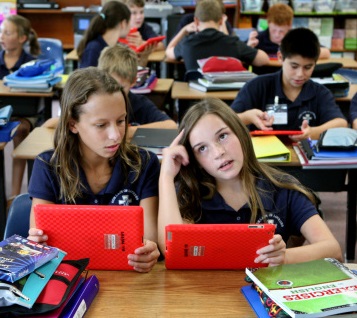E-readers bring hope to some left behind
 New research has found students with dyslexia may find it easier to read on an e-reader than traditional paper.
New research has found students with dyslexia may find it easier to read on an e-reader than traditional paper.
A Harvard study published this week says because electronic reading platforms offer accessibility options that are impossible in print, they are beneficial for those with impairments such as dyslexia.
To conduct the study the Harvard team observed reading comprehension and speed in 103 high school students with dyslexia. Reading on paper was compared with reading on a small handheld e-reader device, formatted to display just a few words per line.
The researchers found that use of the device significantly improved speed and comprehension for a specific group of participants, when compared with paper. E-readers appear to work best for those who struggle with phoneme decoding or efficient sight word reading.
Previous eye-tracking studies have shown that short lines promote reading for students with dyslexia, suggesting that it is the use of short lines (and not the device per se) that leads to the observed benefits. The new report adds to this conclusion, finding that a consequence of visual attention deficits of dyslexia makes it difficult to allocate attention to uncrowded text during reading, and that the short lines help students progress in a natural way across the page.
The Harvard team say it hopes to show that relatively simple adjustments to the visual presentation of text, in this case shortening the lines can facilitate easier reading for those who currently struggle.
The report says with the widespread adoption of e-readers and other digital technologies for reading, reading methods are rapidly evolving, opening the possibility that alternate methods can reverse historically imposed restraints and make reading accessible to many who have been excluded.
The full report is accessible here.








 Print
Print